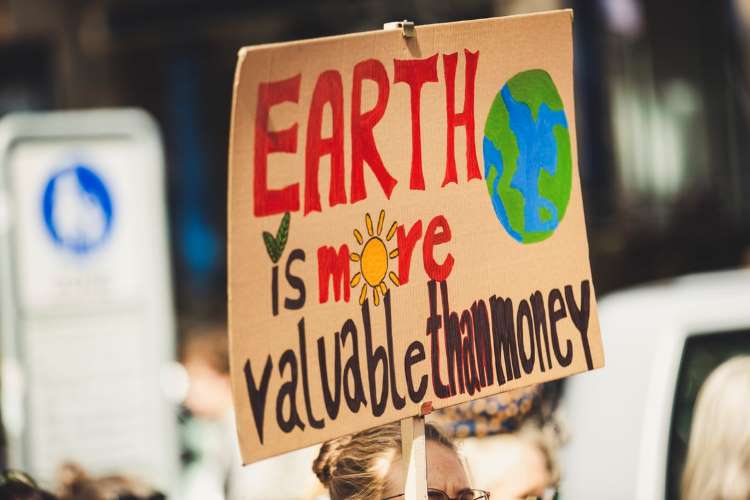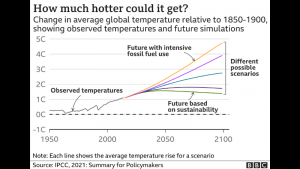
Climate change has been ringing alarm bells for decades now with the nature bearing the brunt of its various manifestations. The degrading of environment has now started to take a toll on the governments financially. The loss of biodiversity across the world may push many developing nations close to default and is likely to result in rating downgrades for India, according to the first sovereign credit rating adjusted for ecological destruction.
The annual borrowing cost for 26 nations including the United States is expected to balloon by $53 billion, should the partial ecological collapse of fisheries, tropical timber production and wild pollination continue, according to a study conducted with the help of Cambridge University researchers. However, that is not the end of the climate change issue.
While credit ratings rarely take into account ecological factors, the report says that it is unwise to turn a blind eye to nature related risks. This rings especially true for countries whose economy are largely based on environment whether by tourism or resources richness. The choice for such countries is simple-pay now, by investing in nature, or pay later through reduced fiscal space and higher borrowing costs.
Further, it is not just on the governments who will have to shell out more to borrow but will also trickle down to average citizens who need to make payments on their mortgages every month. The effects of ecological damages to creditworthiness of nations should concern everyone. In fact, it has been found that economies which were able to check environmental degradation or enhance natural capital witnessed their creditworthiness improved. Depletions in other countries meant that the natural assets of former countries grew scarcer and more valuable.
ALSO READ: Climate change: IPCC report 2022 an indictment of fossil fuel industry
Fear of climate change explained
The reports on climate change have always forecasted apocalypse. However, little is actually done to avert the doomsday. The latest UN climate report presses on ‘now or never’ to stop further global warming and asks governments reconsider their energy policies. The world is on a fast track towards disaster, UN Secretary-General António Guterres recently warned. While the Paris Agreement of 2015 agreed on limiting global warming to 1.5 degree Celsius, the world is currently on a path to double that threshold.
And no proof on paper is required to understand the damning effects of climate change. Summers are longer, heat waves more frequent and intense, disruption in patterns of monsoon, water shortages across the globe, and more; proofs are tangible. However, the latest IPCC report underscores the increase in greenhouse gas emissions generated by human activity since 2010. This covers all the major sectors globally and the governments that have broken promises to keep climate change under control as they continue to invest in environment-choking industries.

The most troubling aspect of global warming is that most of the damage done to the environment already is irreversible. Some species in flora and fauna have gone extinct. Glaciers are melting at an unprecedented rate which has resulted in rising sea levels.
Recently, the foreign minister of Tuvalu, a tiny Pacific island nation located halfway between Hawaii and Australia, delivered the most resounding message at the United Nations COP26 climate summit. Standing knee-deep in water, the top diplomat said that the country is living the reality of climate change with the rise in sea levels. The message is clear — countries across the world are sinking. The worst part of the climate change story is that the countries who are most culpable are the ones bearing the least loss while poorer countries continue to face the wrath whether it be by food shortages or low water availability.
Effects of climate change in India
South Asia is one of the regions most threatened by climate change risks. This year itself, India and Pakistan witnessed some of the worst heat waves in decades. March was the hottest in India since records began 122 years ago, with the month witnessing early and prolonged heat waves.
Shortage of water is another pressing issue for many villages in India. Recently, a village in Nashik, Maharashtra made headlines when a video showing women descend to wells to fetch water surfaced. In Rajasthan, the acute shortage is crippling 70 villages where there is no water to drink, or irrigate fields or to give to cattle. In fact, forget villages, the poshest locations of the capital New Delhi are also currently facing water issues with the depletion in groundwater. The climate change threat is real and very much here.
What needs to be done to limit climate change
Apart from the obvious need of reduction in greenhouse gas emissions, all countries must reduce use of fossil fuels substantially and increase the use of alternative fuels such as green hydrogen. The governments must also work on improving energy efficiency and incentivising citizens to switch to environmentally friendly ways of generating electricity such as solar panels. While renewable energy usage is promoted, the need is also to bring down the cost of renewable energy sources as the one-time cost of installation of solar and wind energy, and batteries impede the usage currently.
Global temperatures are expected to stabilise when carbon dioxide emissions reach net zero. For limiting global warming to 1.5C, this means achieving net zero carbon dioxide emissions globally in the early 2050s, the IPCC report states. The only hope remains that if timely action is taken now, as the UN insists, we may actually be able to evade the most harrowing
Prachi Gupta is an Assistant Editor with Policy Circle. She is a post graduate in English Literature from Lady Shri Ram College For Women, Delhi University. Prachi started her career as a correspondent with financialexpress.com. She specialises in policy impact studies.

